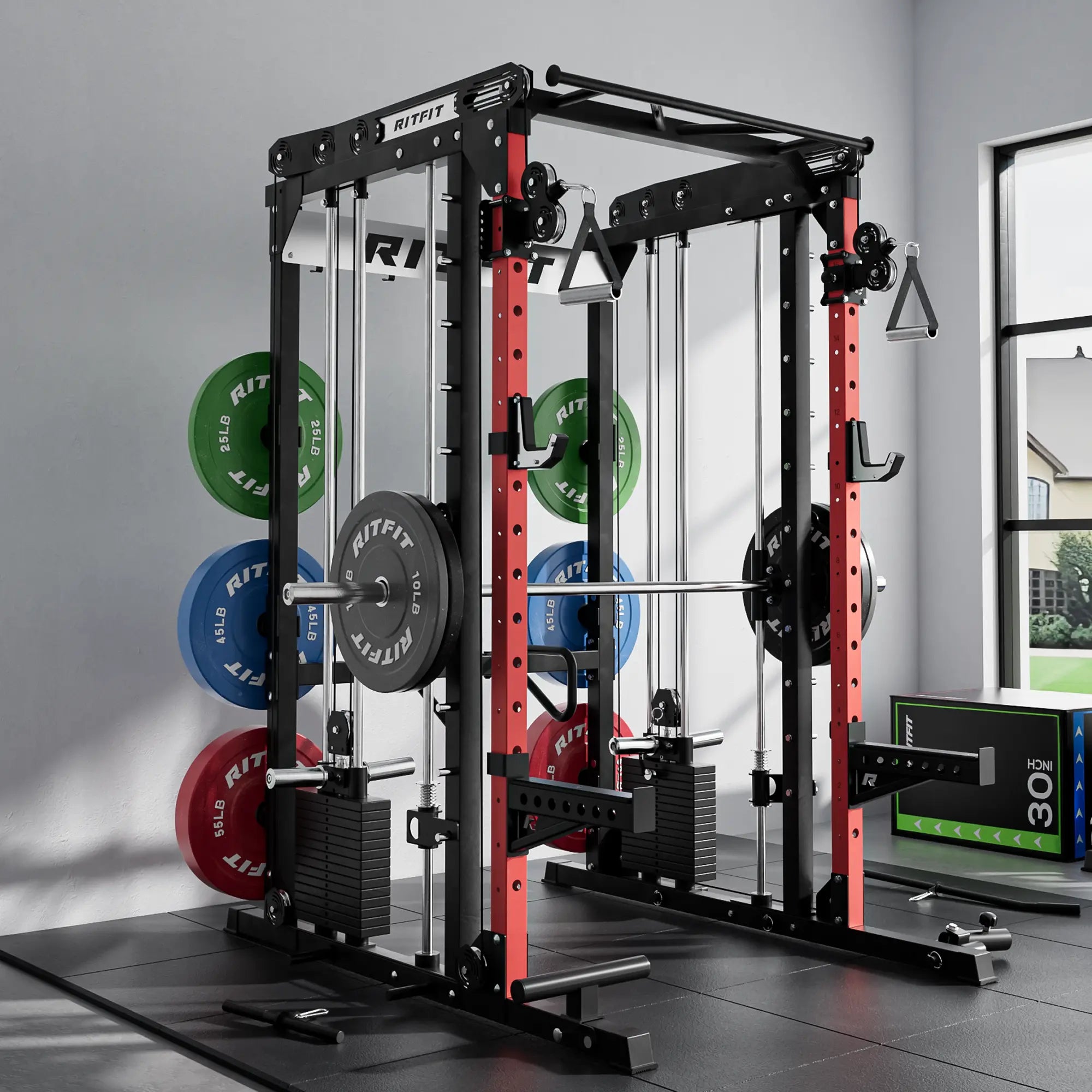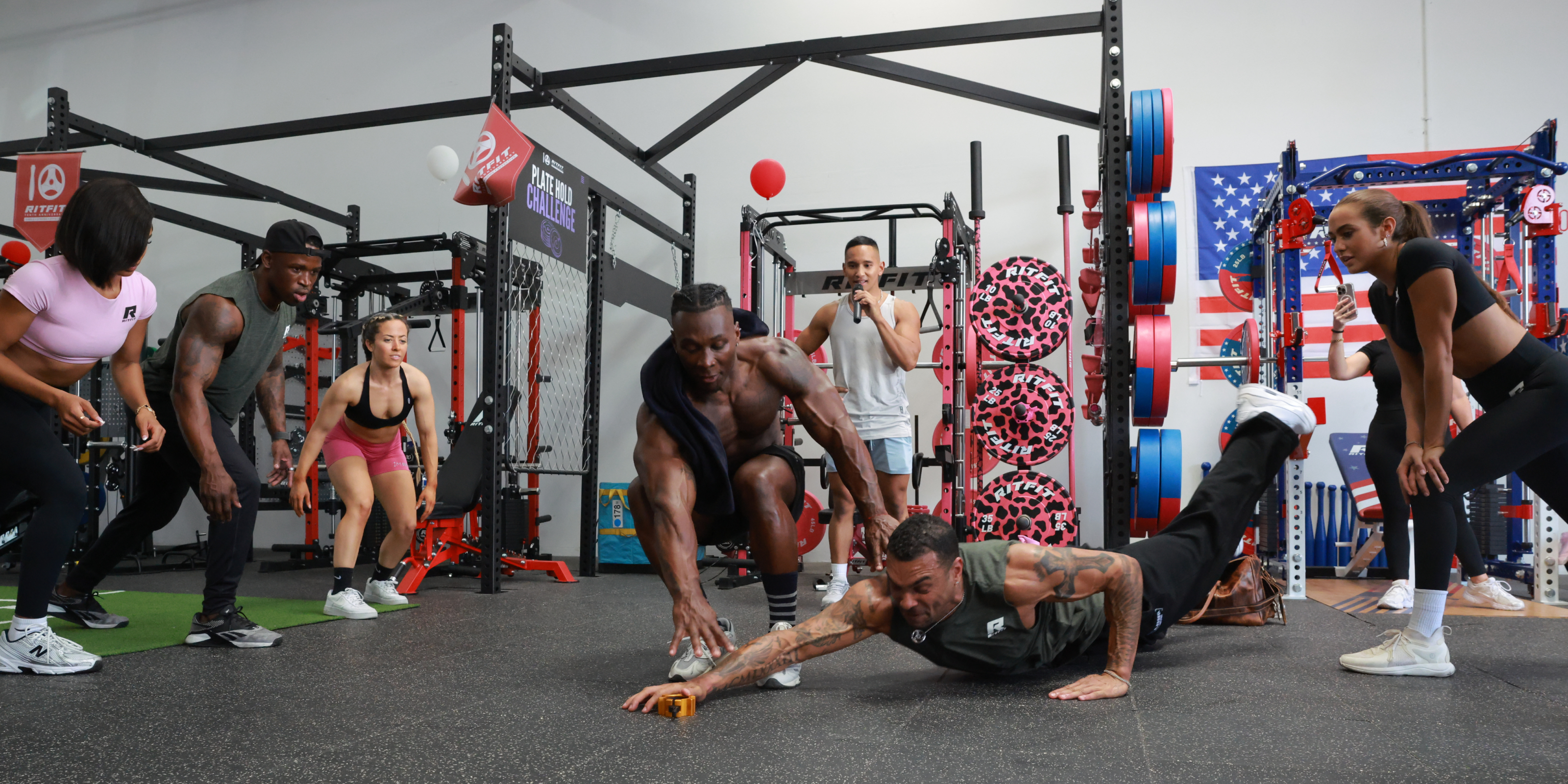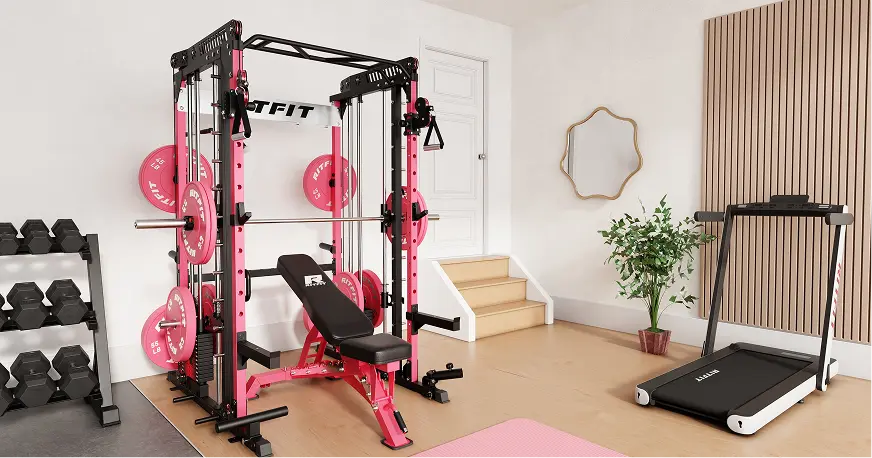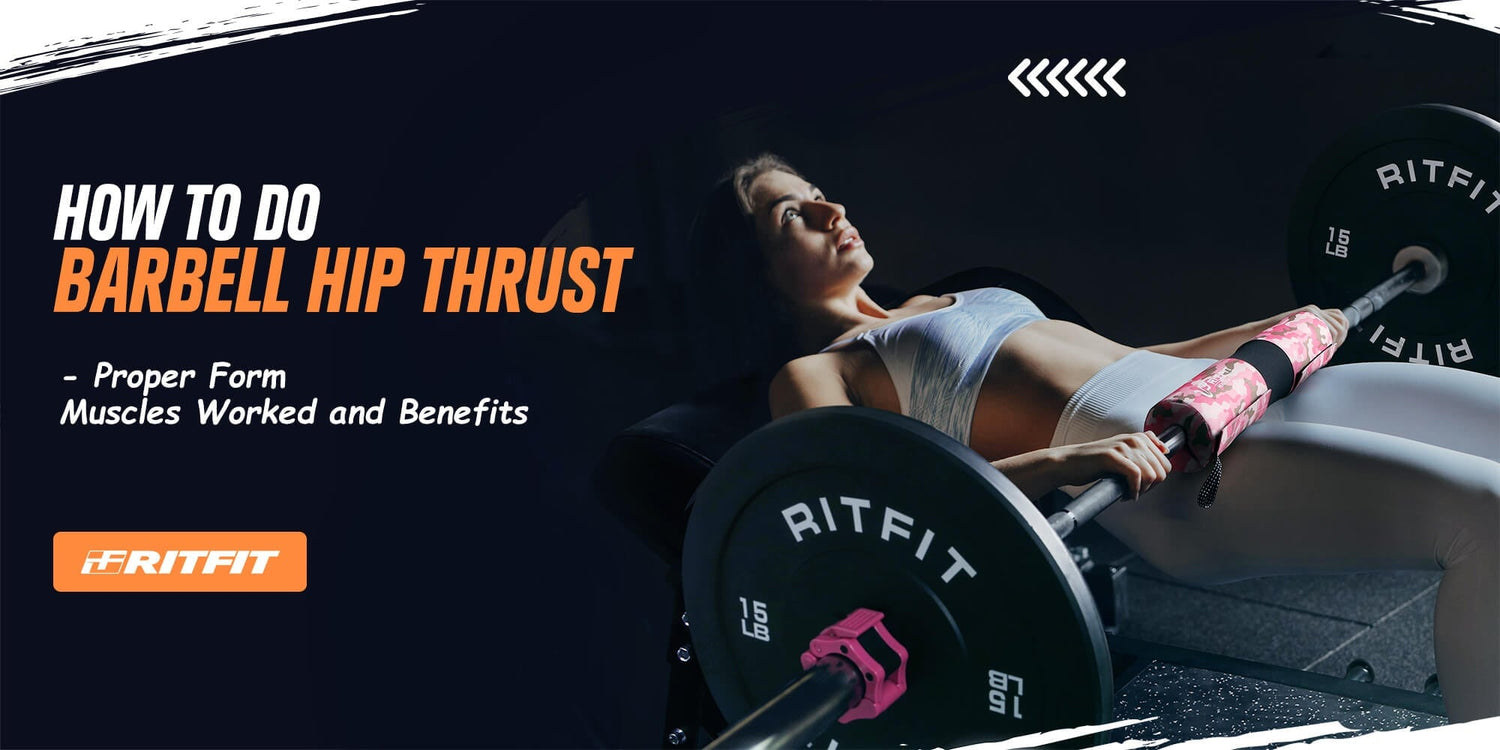The barbell hip thrust exercise is popular among strength and muscle-building enthusiasts. This exercise targets the glutes and hamstrings. You can build a stronger and more defined posterior chain by performing this exercise with the correct form. It can help you achieve better athletic performance and improved overall posture. In this article, we'll look closely at the proper form for performing the barbell hip thrust, the muscles worked, the benefits, and some common mistakes to avoid.
What is A Barbell Hip Thrust?

The barbell hip thrust is a lower body strength training exercise that involves lifting a weighted barbell using your hip muscles while sitting on the floor in a movement similar to a bridge or a pelvic thrust. It involves extending your hips fully while holding a weighted barbell across the midsection.
How to Do A Barbell Hip Thrust the Right Way
To perform a barbell hip thrust correctly, follow these steps:
- Set Up Properly: Start by sitting down and put your upper back up against a flat bench. Next, place a barbell between your legs.
- Position Your Feet and Knees: Ensure your feet are flat on the floor while your knees are bent at a 90-degree angle.
- Grip the Barbell: Hold the bar with a pronated grip, keeping your arms straight.
- Execute the Movement: Push through your heels, extend your hips upward, and raise the barbell as high as possible.
- Work Your Glutes and Hamstrings: At the top of the movement, squeeze your glutes and hamstrings and stay in this position for a few seconds.
- Reposition and Repeat: Lower the bar back to the starting position and repeat.
Barbell Hip Thrust Common Mistakes
Although barbell hip thrusts are easy to perform, some people make mistakes that can reduce the movement's effectiveness or increase the risk of injury. Below, we've mentioned some common mistakes to avoid when doing this exercise:
1. Arching Your Back Excessively
Most people over-arch their lower back while performing the barbell hip thrust. This can lead to discomfort or even injury in the spine. Your trunk should be as stiff as a board throughout the exercise. A braced core helps strengthen your glutes and keeps any extra stress out of your lower back. To avoid over-arching your lower back, keep your head and neck in a neutral position throughout the exercise. Imagine a straight line from your head to your tailbone and maintain that alignment. This will ensure your lower back is not taking on unnecessary stress.
2. Using Your Lower Back to Lift the Weight
Another common mistake is using their lower back to lift weights instead of the glutes and hamstrings. This can cause lower back pain and reduced activation of your glutes. To ensure you're using the right muscles, focus on driving your hips upward and squeezing your glutes at the top of the movement. You should feel your glutes working hard throughout the exercise.
3. Placing the Bar Too High on Your Hips
Placing the bar too high on your hips can also cause discomfort and reduce the movement's effectiveness. If the bar is too high, it can press into your abdominal area, making breathing hard and limiting your range of motion. To avoid this, position the barbell across your hip bones, not your abdominal area.
4. Rounding Your Shoulders Forward
Rounding your shoulders forward can reduce your range of motion and make it harder to keep your spine in a neutral position. Make sure to keep your shoulders back and down throughout the exercise to maintain proper form and reduce the risk of injury.
5. Allowing Your Knees to Move Outwards
Another mistake to avoid when performing the barbell hip thrust is allowing your knees to move outwards too much. While it's important to keep your knees from caving in, overcompensating and allowing them to move too far outwards can also negatively impact the exercise by shifting the focus from your glutes. This can result in less activation of your glutes and a less effective workout overall.
Muscles Worked in the Barbell Hip Thrust
The muscles worked by the barbell hip thrust exercise are your posterior chain. When performed correctly, this exercise can help to strengthen your glutes, hamstrings, quadriceps, and erector spinae. Here's a breakdown of the main muscles worked in this workout:
Glutes (especially the gluteus maximus)

The primary muscle worked in the barbell hip thrust is the gluteus maximus and for good reason. This muscle, the largest of the gluteal muscles, extends from the top of the pelvic bone down to the thigh bone. It plays a crucial role in walking, running, and jumping. The gluteus maximus aids in hip extension, which is essential for activities requiring powerful lower-body movements.
Hamstrings

The hamstrings are a group of muscles present at the back of your thigh. These muscles are responsible for knee flexion and hip extension and play a crucial role in many athletic movements, including sprinting, jumping, and squatting. Incorporating the barbell hip thrust into your workout routine can strengthen your hamstrings and reduce your risk of injury.
Quadriceps

Although the barbell hip thrust is primarily a glute exercise, it also works your quadriceps, the muscles at the front of your thigh. The quadriceps play a crucial role in knee extension and are involved in many lower-body movements.
Erector Spinae

The erector spinae is a group of muscles located along the spine. These muscles are responsible for spinal extension and help maintain good posture while reducing the risk of lower back pain. By performing the barbell hip thrust, you can strengthen your erector spinae and improve your overall spinal health.
Barbell Hip Thrust Sets and Reps

To build strength and muscle with the barbell hip thrust, aim for the following sets and reps:
- Beginners: 3 sets of 10 reps
- Intermediate: 4 sets of 12 reps
- Advanced: 5 sets of 15 reps
Benefits of Barbell Hip Thrust
- Increased Strength and Muscle Mass in the Glutes and Hamstrings: The primary muscles worked in this type of hip thrust are the glutes and hamstrings, making this exercise an excellent way to build strength and muscle in these areas. Consistently performing this exercise increases the size and strength of your glutes and hamstrings, leading to better overall lower body strength and athletic performance.
- Improved Posture and Spinal Health: The barbell hip thrust is a posterior chain exercise that targets the muscles responsible for maintaining good posture and spinal health. By strengthening your glutes, hamstrings, and erector spinae with this strength training exercise, you can help to improve your overall posture and reduce your risk of lower back pain and other spinal issues.
- Reduced Risk of Injury: By strengthening your glutes, hamstrings, and erector spinae, this workout can reduce your risk of injury in the lower back, hips, and knees. This type of hip thrust is a low-impact exercise to improve your lower body strength and stability, reducing the likelihood of injuries in these areas.
Barbell Hip Thrust Alternatives
Alternative #1: Dumbbell Hip Thrusts
A dumbbell hip thrust involves using dumbbells instead of a barbell for resistance. To perform a dumbbell hip thrust, you would follow a similar setup and movement pattern as the barbell thrust, but instead of placing a barbell across your hips, you would hold a dumbbell in each hand.
Dumbbell hip thrusts can be a good alternative to barbell hip thrusts. Dumbbells are more accessible equipment available in most gyms. They take up less space and target different muscle groups and movement patterns. Compared to a barbell, dumbbells allow for greater control and balance, making it easier to perform the movement with good form and reducing the risk of injury.
Alternative #2: Glute Bridges
Glute bridges are a bodyweight exercise that targets the glutes and hamstrings and can be a good alternative. To perform a glute bridge, lie on your back with your knees bent, and lift your hips off the floor to perform a similar movement to the barbell hip thrust.
Glute bridges can be a good alternative because they don’t require exercise equipment. This makes them a great exercise to do at home or when you don't have access to a gym. Glute bridges are also a great exercise for beginners or those just starting to work on their glutes and hamstrings. You can modify them to suit your fitness levels and build a strong foundation for more advanced exercises.
Summary
The barbell hip thrust is a practical exercise for developing your glutes, hamstrings, and other muscles in your posterior chain. By performing this exercise with proper form and incorporating it into your workout routine, you can improve your athletic performance and reduce your risk of injury. If you can't perform this exercise, try the alternative workouts we suggested to achieve similar results.
















